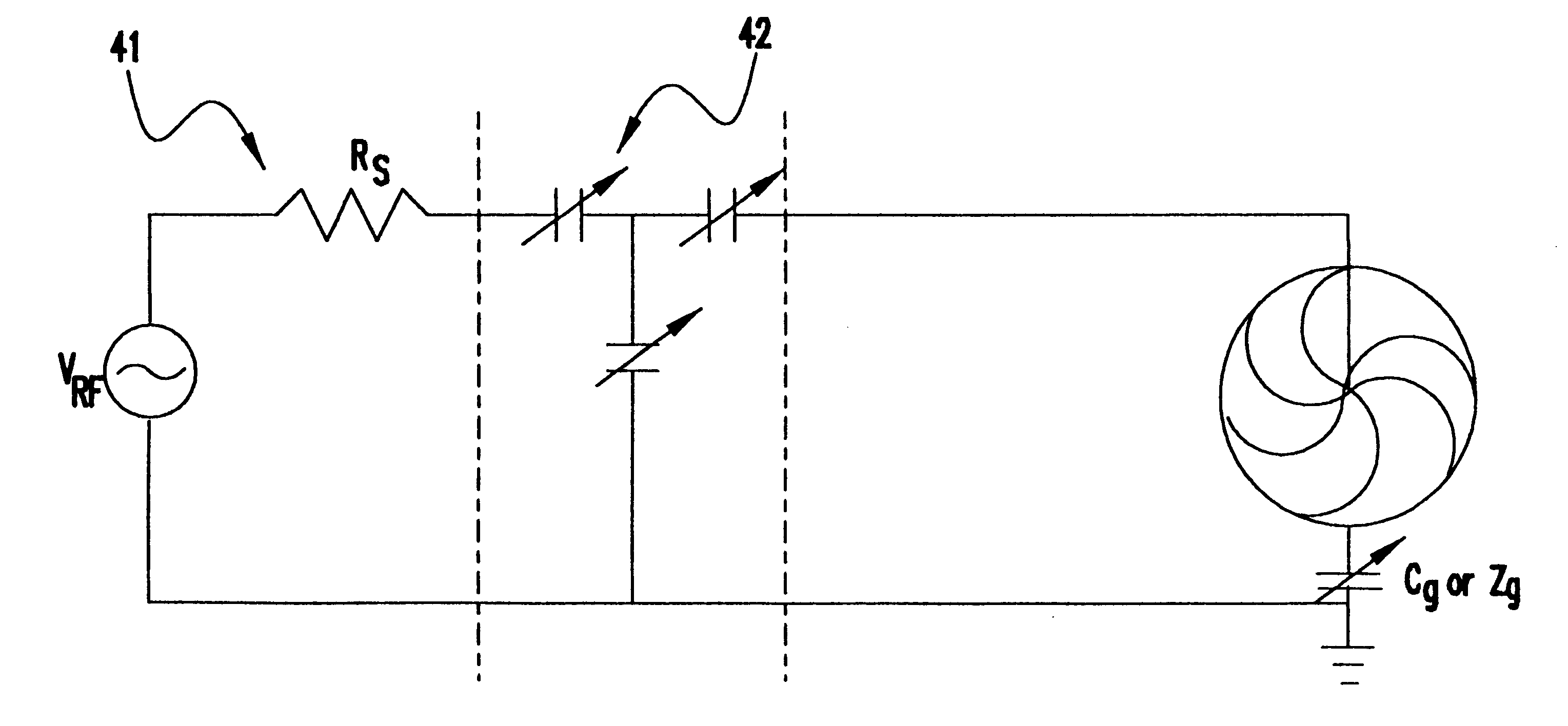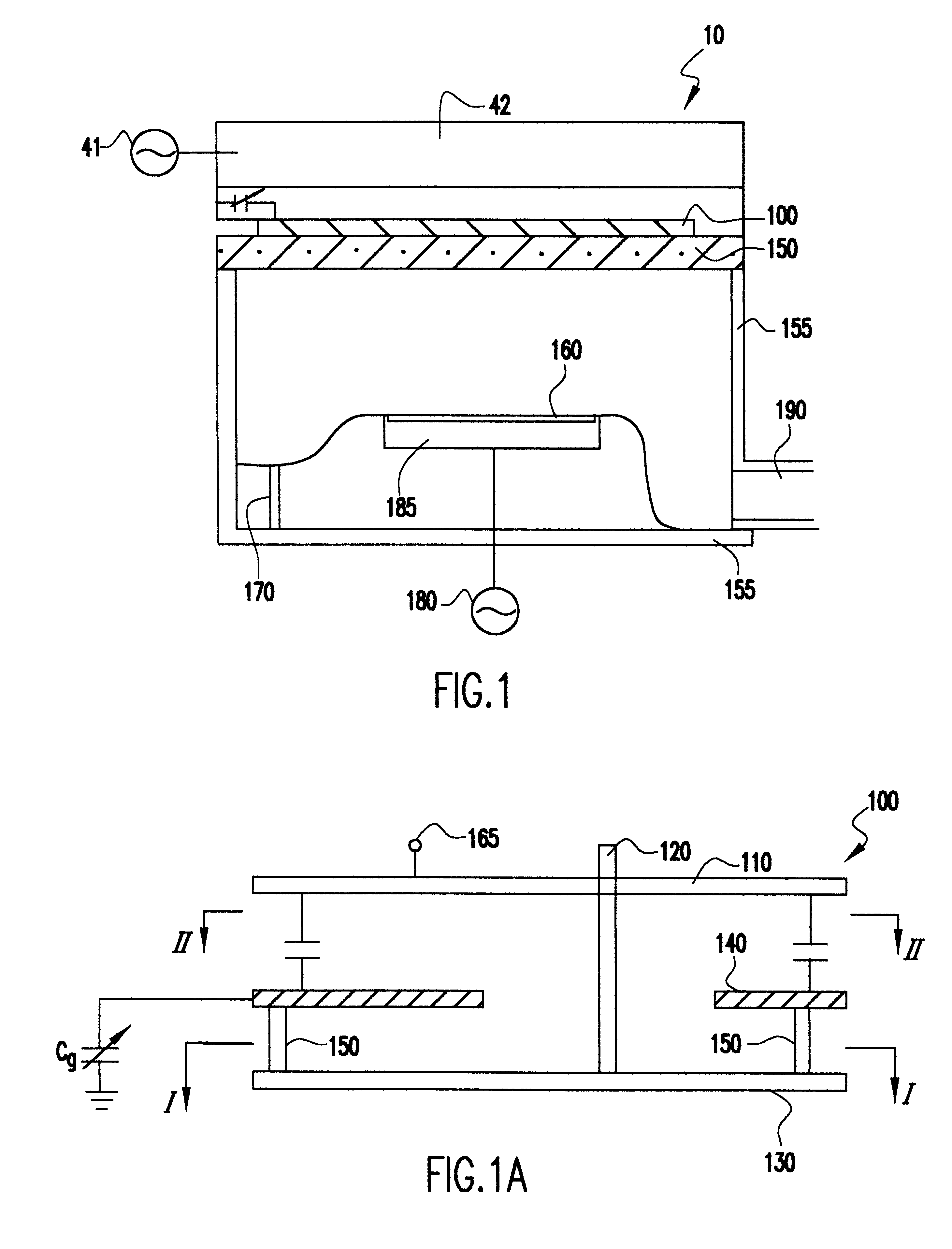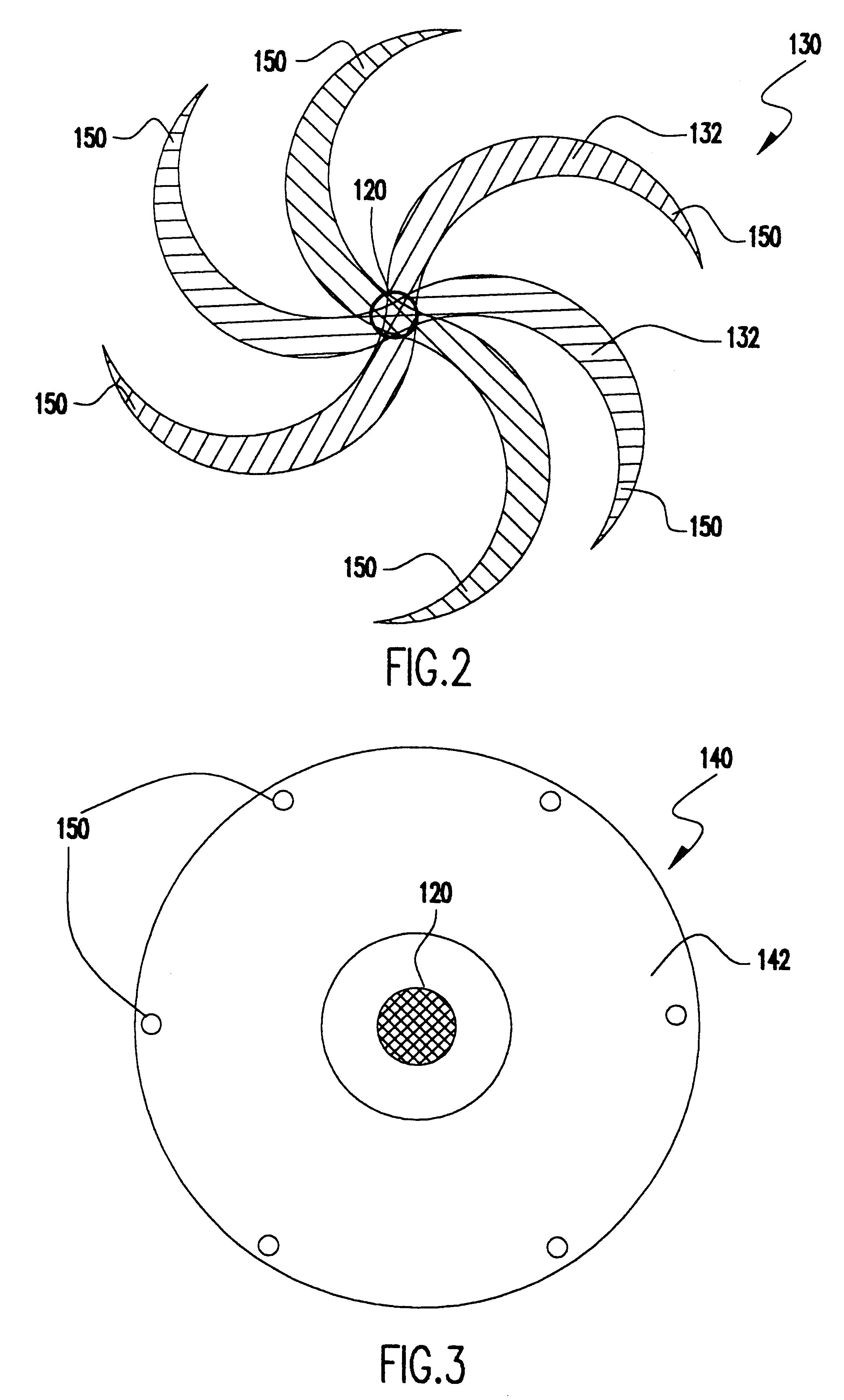High density plasma tool with adjustable uniformity and stochastic electron heating for reduced gas cracking
a plasma tool and uniformity adjustment technology, applied in the field of plasma etching process, can solve the problems of high cost, high precision, and inability to protect other surfaces with lithographically patterned resists, and achieve the effects of high reliability, consistency and manufacturing yield, and high precision of tools
- Summary
- Abstract
- Description
- Claims
- Application Information
AI Technical Summary
Benefits of technology
Problems solved by technology
Method used
Image
Examples
Embodiment Construction
Referring now to the drawings, and more particularly to FIG. 1, there is shown a side, cross-sectional view of a schematic representation of a reaction chamber or vessel 10 in accordance with a preferred form of the invention. It should be understood that the depiction of FIG. 1, being largely schematic, will share many characteristics with known reaction vessels developed for performing various semiconductor wafer processing operations. By the same token, it is to be understood that details thereof are not critical to the practice of the invention. Further, at the level of detail shown in FIG. 1 numerous salient details, particularly involving the antenna arrangement, and elements related thereto of the invention are omitted and, to that extent, the depiction of FIG. 1 can be considered as representing either known systems or the invention in its preferred environment. Accordingly, no portion of FIG. 1 is admitted to be prior art in regard to the present invention.
Reactor vessel 10...
PUM
| Property | Measurement | Unit |
|---|---|---|
| frequency | aaaaa | aaaaa |
| plasma density | aaaaa | aaaaa |
| density | aaaaa | aaaaa |
Abstract
Description
Claims
Application Information
 Login to View More
Login to View More - R&D
- Intellectual Property
- Life Sciences
- Materials
- Tech Scout
- Unparalleled Data Quality
- Higher Quality Content
- 60% Fewer Hallucinations
Browse by: Latest US Patents, China's latest patents, Technical Efficacy Thesaurus, Application Domain, Technology Topic, Popular Technical Reports.
© 2025 PatSnap. All rights reserved.Legal|Privacy policy|Modern Slavery Act Transparency Statement|Sitemap|About US| Contact US: help@patsnap.com



